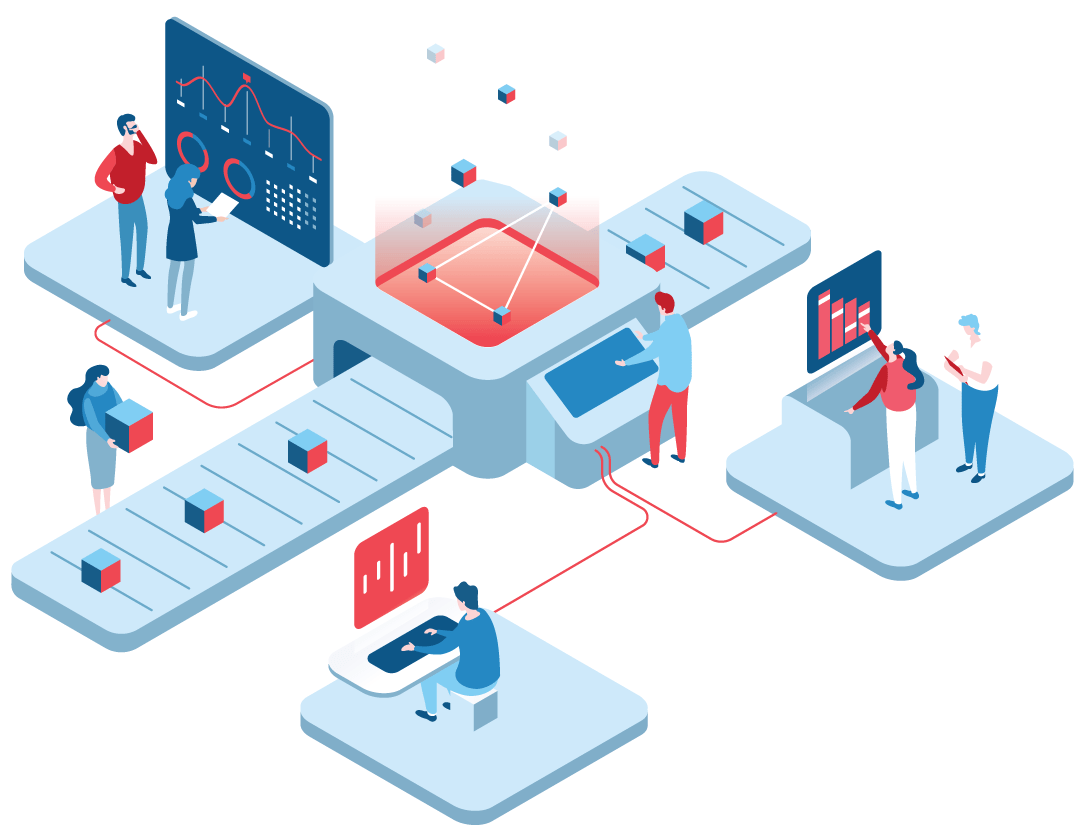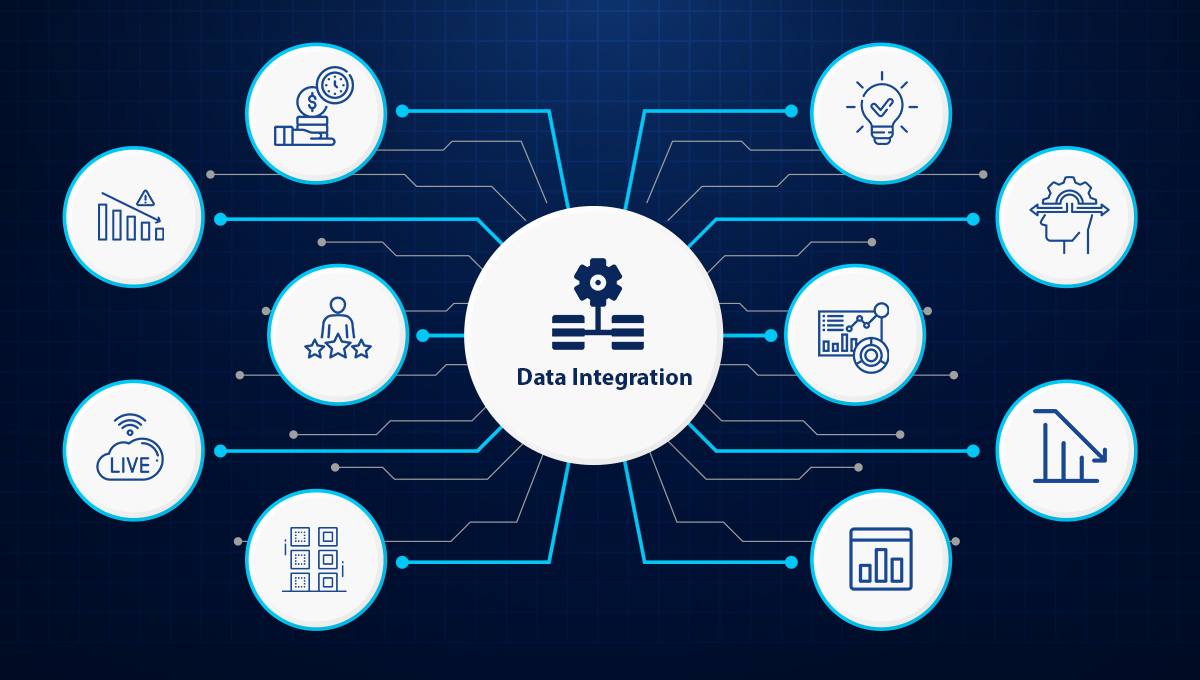This course introduces the foundations of Software Systems Architecture, technology architecture and Architectural styles such as Client / Server architecture, service-oriented architectures, data centered architectures, cloud computing, etc. It will discuss the key elements of software architecture, and describe the roles of a software systems architect and analyzes the architecture quality attributes like scalability, performance and availability and the software architecture lifecycle. It presents an introduction to the subject and concepts of Enterprise Systems Architecture (ESA).

- Teacher: Sobhi Ahmed
- Teacher: Sonia Ayachi
- Teacher: Sami Bhiri
- Teacher: George Dafoulas
- Teacher: Giorgio Giacinto
- Teacher: mohamed Graiet
- Teacher: Lazhar Hamel
- Teacher: Yousef Hassouneh
- Teacher: Rashid Jayousi
- Teacher: Nidal Kafri
- Teacher: Soulef Khalfallah
- Teacher: Maha KHEMAJA
- Teacher: Maha Khemaja
- Teacher: Majdi Mafarja
- Teacher: ABED Othman
- Teacher: Ahmed Riadi
- Teacher: Said Salah
- Teacher: Salvador Sanchez-Alonso
- Teacher: Iyad Tumar
|
Course Description |
|
This course will introduce enterprise systems and show how they can be used by organizations to run their operations more efficiently and effectively. Functionalities and purposes of enterprise systems will be presented and analyzed, including enterprise resource planning (ERP) systems and will examine the implementation process of ERP systems, covering business processes, ERP architecture, ERP usage, project planning, production, and sales business processes using ERP software. The course will introduce also the customer relationship management (CRM) systems that helps in building and retaining long-term relationships with customers, its definition, lifecycle, applications and technologies. The course will present the supply chain management (SCM) systems and their applications. |
|
Course aim(s) |
|
The main objectives of this course are (i) Introduce students to the fundamental concepts and the applications of enterprise systems (ii) Students will be able to identify the efficiency and effectiveness of the organization in performing the respective business processes required to run their operations and to deliver their goods or services to customers by using three processes : enterprise resource planning ERP, customer relationship management CRM, and supply chain management SCM. (iii) Develop student’s practical skills in the configuration and enhancement of enterprise systems and the skills needed to be a project manager. |

- Teacher: Sobhi Ahmed
- Teacher: Sonia Ayachi
- Teacher: Sami Bhiri
- Teacher: George Dafoulas
- Teacher: Giorgio Giacinto
- Teacher: mohamed Graiet
- Teacher: Lazhar Hamel
- Teacher: Yousef Hassouneh
- Teacher: Rashid Jayousi
- Teacher: Nidal Kafri
- Teacher: Soulef Khalfallah
- Teacher: Maha KHEMAJA
- Teacher: Maha Khemaja
- Teacher: Majdi Mafarja
- Teacher: ABED Othman
- Teacher: Ahmed Riadi
- Teacher: Said Salah
- Teacher: Salvador Sanchez-Alonso
- Teacher: Iyad Tumar
This course introduces methods techniques, for complex real-word systems (enterprises) model simulation. Also, it covers approaches of computer simulation for different system models (Static vs. Dynamic, Deterministic vs. Stochastic/ probabilistic, Continuous vs. Discrete). It emphasizes on analysis of simulation results to help decision making to improve performance and efficiency of systems. This course introduces simulation process and analysis using simulation of simple process by hand then by using popular software packages/tool for computer simulation. The course introduces basic statistics and probability, queuing theory, input data modeling, output data analysis, verification and validation of system models. It will emphasize critical thinking rather than memorization.

- Teacher: Sobhi Ahmed
- Teacher: Sonia Ayachi
- Teacher: Sami Bhiri
- Teacher: Mr. BZU
- Teacher: George Dafoulas
- Teacher: Giorgio Giacinto
- Teacher: mohamed Graiet
- Teacher: Lazhar Hamel
- Teacher: Yousef Hassouneh
- Teacher: Rashid Jayousi
- Teacher: Nidal Kafri
- Teacher: Soulef Khalfallah
- Teacher: Maha KHEMAJA
- Teacher: Maha Khemaja
- Teacher: Majdi Mafarja
- Teacher: ABED Othman
- Teacher: Ahmed Riadi
- Teacher: Said Salah
- Teacher: Salvador Sanchez-Alonso
- Teacher: Iyad Tumar
This course provides a comprehensive overview of the foundational security principles, techniques and best practices, in both management and technical aspects, which are associated with the design, development and deployment of enterprise information systems. It includes the following topics: elements of information security, cryptograph concepts and algorithms, symmetric and asymmetric ciphers, data integrity algorithms, systems and Web applications security, mobile security, enterprise mobility management systems, Internet authentication applications, network and Internet security, IT security management, security plans and procedures, risk management systems, and ethical and legal aspects.

- Teacher: Sobhi Ahmed
- Teacher: Sonia Ayachi
- Teacher: Sami Bhiri
- Teacher: Mr. BZU
- Teacher: George Dafoulas
- Teacher: Giorgio Giacinto
- Teacher: mohamed Graiet
- Teacher: Lazhar Hamel
- Teacher: Yousef Hassouneh
- Teacher: Rashid Jayousi
- Teacher: Nidal Kafri
- Teacher: Soulef Khalfallah
- Teacher: Maha KHEMAJA
- Teacher: Maha Khemaja
- Teacher: Majdi Mafarja
- Teacher: ABED Othman
- Teacher: Ahmed Riadi
- Teacher: Said Salah
- Teacher: Salvador Sanchez-Alonso
- Teacher: Iyad Tumar
This course introduces methods techniques, for complex real-word systems (enterprises) model simulation. Also, it covers approaches of computer simulation for different system models (Static vs. Dynamic, Deterministic vs. Stochastic/ probabilistic, Continuous vs. Discrete). It emphasizes on analysis of simulation results to help decision making to improve performance and efficiency of systems. This course introduces simulation process and analysis using simulation of simple process by hand then by using popular software packages/tool for computer simulation. The course introduces basic statistics and probability, queuing theory, input data modeling, output data analysis, verification and validation of system models. It will emphasize critical thinking rather than memorization.

- Teacher: Sobhi Ahmed
- Teacher: Sonia Ayachi
- Teacher: Sami Bhiri
- Teacher: Mr. BZU
- Teacher: George Dafoulas
- Teacher: Giorgio Giacinto
- Teacher: mohamed Graiet
- Teacher: Lazhar Hamel
- Teacher: Yousef Hassouneh
- Teacher: Rashid Jayousi
- Teacher: Nidal Kafri
- Teacher: Soulef Khalfallah
- Teacher: Maha KHEMAJA
- Teacher: Maha Khemaja
- Teacher: Majdi Mafarja
- Teacher: ABED Othman
- Teacher: Ahmed Riadi
- Teacher: Said Salah
- Teacher: Salvador Sanchez-Alonso
- Teacher: Iyad Tumar
The course covers main techniques and methods used during the Business Process (BP) lifecycle. It starts by introducing basic concepts, modelling techniques and languages. Then it reviews control-flow verification and quantitative model analysis. The course also discusses BP implementation, using workflow-like management systems and service oriented techniques. The course covers next mining techniques for discovery, conformance checking and model enrichment. It follows up with log-based BP analysis. The course reviews as well other kind of BP especially reference and declarative BP. The course finishes by applying the discussed techniques within use-case based projects.

- Teacher: Sobhi Ahmed
- Teacher: Sonia Ayachi
- Teacher: Sami Bhiri
- Teacher: Mr. BZU
- Teacher: George Dafoulas
- Teacher: Giorgio Giacinto
- Teacher: mohamed Graiet
- Teacher: Lazhar Hamel
- Teacher: Yousef Hassouneh
- Teacher: Rashid Jayousi
- Teacher: Nidal Kafri
- Teacher: Soulef Khalfallah
- Teacher: Maha KHEMAJA
- Teacher: Maha Khemaja
- Teacher: Majdi Mafarja
- Teacher: ABED Othman
- Teacher: Ahmed Riadi
- Teacher: Said Salah
- Teacher: Salvador Sanchez-Alonso
- Teacher: Iyad Tumar
This module gives the opportunity for students to assess their entrepreneurial potential. Then it presents means for improving it. The module initiates students to means for managing their future projects or business (by agile methods and financial techniques). It also deals with problem solving and decision making. Moreover, Business plan is presented, so that students become able to elaborate it for their own project. Marketing techniques are afterwards detailed for the purpose of promoting such projects. Finally, an entrepreneurial framework is presented with various principles to be considered while launching its own project or business.

- Teacher: Sobhi Ahmed
- Teacher: Sonia Ayachi
- Teacher: Sami Bhiri
- Teacher: Mr. BZU
- Teacher: George Dafoulas
- Teacher: Giorgio Giacinto
- Teacher: mohamed Graiet
- Teacher: Lazhar Hamel
- Teacher: Yousef Hassouneh
- Teacher: Rashid Jayousi
- Teacher: Nidal Kafri
- Teacher: Soulef Khalfallah
- Teacher: Maha KHEMAJA
- Teacher: Maha Khemaja
- Teacher: Majdi Mafarja
- Teacher: ABED Othman
- Teacher: Ahmed Riadi
- Teacher: Said Salah
- Teacher: Salvador Sanchez-Alonso
- Teacher: Iyad Tumar
This course tackles both aspects of integration namely data and application/system integration. It contains an introduction that helps students raise awareness about problems of integration within enterprise systems, information systems and other kinds of applications. It provides five chapters for data integration and six other chapters for system integration. The final chapter attempts to cover simultaneously both aspects. It also gives insights about current and future trends related to integration in the era of the Web and cloud computing.

- Teacher: Sobhi Ahmed
- Teacher: Sonia Ayachi
- Teacher: Sami Bhiri
- Teacher: Mr. BZU
- Teacher: George Dafoulas
- Teacher: Giorgio Giacinto
- Teacher: mohamed Graiet
- Teacher: Lazhar Hamel
- Teacher: Yousef Hassouneh
- Teacher: Rashid Jayousi
- Teacher: Nidal Kafri
- Teacher: Soulef Khalfallah
- Teacher: Maha KHEMAJA
- Teacher: Maha Khemaja
- Teacher: Majdi Mafarja
- Teacher: ABED Othman
- Teacher: Ahmed Riadi
- Teacher: Said Salah
- Teacher: Salvador Sanchez-Alonso
- Teacher: Iyad Tumar
In this course, we talk about digital transformation in two ways. First we discuss the pace of this transformation and the imperative it creates for businesses. Next we provide the context for this transformation and what it takes to win in the digital age.
This course would prepare students to contribute to digital transformation in companies. First, they should be able to introduce new technologies and manage disruption. Next, they should be able to establish new practices and raise peers awareness of these practices.
It would initiate students to many technological and practical aspects that will be more deeply developed in subsequent modules.

- Teacher: Sobhi Ahmed
- Teacher: Sonia Ayachi
- Teacher: Sami Bhiri
- Teacher: Mr. BZU
- Teacher: George Dafoulas
- Teacher: Giorgio Giacinto
- Teacher: mohamed Graiet
- Teacher: Lazhar Hamel
- Teacher: Yousef Hassouneh
- Teacher: Rashid Jayousi
- Teacher: Nidal Kafri
- Teacher: Soulef Khalfallah
- Teacher: Maha KHEMAJA
- Teacher: Maha Khemaja
- Teacher: Majdi Mafarja
- Teacher: ABED Othman
- Teacher: Ahmed Riadi
- Teacher: Said Salah
- Teacher: Salvador Sanchez-Alonso
- Teacher: Iyad Tumar
